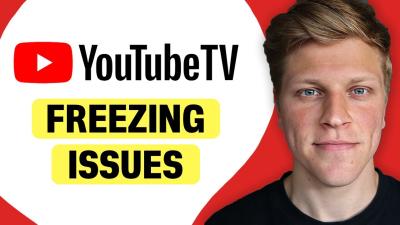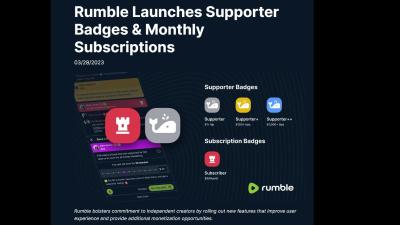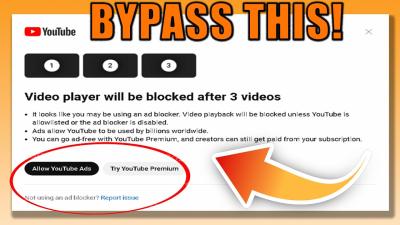When it comes to video sharing platforms, content creators often look for the best ways to monetize their work. Rumble and YouTube are two popular options, each offering distinct approaches to payments. In this blog post, we’ll dive into the specifics of Rumble’s payment system and how it stacks up against YouTube’s, helping you decide which platform might be right for you as a creator.
Overview of Rumble’s Payment System
Rumble has carved a niche for itself as a platform that prioritizes content creators’ earnings. Here’s a closer look at how its payment system works:
- Revenue Sharing Model: Rumble operates on a revenue-sharing model whereby creators earn a percentage of the revenue generated from ads shown on their videos. The typical split is around 60% for the creator and 40% for Rumble, which is quite competitive.
- Monetization Options: Creators have multiple monetization pathways, including:
- Ad Revenue: Earn from ads placed on videos.
- Licensing: Creators can license their videos to media outlets or brands for additional earnings.
- Rumble Premium: Users can subscribe to exclusive content, giving creators another revenue stream.
- Flexible Payouts: Rumble offers flexible payout options, allowing creators to withdraw earnings as they accumulate. This is a significant advantage for creators needing immediate access to funds.
- Transparency: Rumble aims for transparency in its payment processes, providing creators with clear insights into how their earnings are calculated.
Overall, Rumble’s payment system presents a compelling alternative for creators who prioritize direct earnings and diverse monetization opportunities.
Overview of YouTube’s Payment System
YouTube, a giant in the online video-sharing realm, has developed a robust payment system that rewards creators for their content. This system primarily revolves around the YouTube Partner Program (YPP), which allows eligible creators to monetize their videos through various methods.
To join the YPP, creators must meet certain requirements:
- At least 1,000 subscribers
- 4,000 watch hours in the past 12 months
- Adherence to YouTube’s policies and guidelines
Once accepted, creators can earn money through:
- Ad Revenue: Creators earn a share of the ad revenue generated from views on their videos. The more viewers, the more potential earnings.
- Channel Memberships: Fans can pay a monthly fee for exclusive content and perks, providing creators with a steady income stream.
- Super Chat and Super Stickers: During live streams, fans can pay to have their messages highlighted, directly supporting their favorite creators.
- YouTube Premium: Creators earn a portion of the subscription fee from YouTube Premium users who watch their content.
This multifaceted approach to monetization makes YouTube an attractive platform for content creators. Yet, while the potential for income is significant, the competition is fierce, and success often requires consistent engagement and high-quality content.
Key Differences Between Rumble and YouTube Payments
When comparing Rumble’s payment system to that of YouTube, several key differences emerge that highlight the unique advantages and challenges of each platform.
| Feature | YouTube | Rumble |
|---|---|---|
| Monetization Eligibility | 1,000 subscribers & 4,000 watch hours | Creators can monetize from day one |
| Revenue Share | Ad revenue split (approx. 55% to creators) | Up to 60% for creators |
| Types of Monetization | Ads, memberships, Super Chats | Ads, licensing revenue |
| Content Control | Stricter content guidelines | More lenient, but still moderated |
In summary, Rumble offers a more accessible entry point for new creators, allowing them to start earning sooner without meeting stringent requirements. On the other hand, YouTube’s established platform provides diverse monetization options and a vast audience, albeit with higher competition and stricter guidelines. Understanding these differences can help creators choose the platform that best suits their needs and goals.
Advantages of Rumble’s Payment System
Rumble has carved out a niche in the online video sharing landscape, and one of its standout features is its payment system. Here are some key advantages that make Rumble appealing to content creators:
- Higher Revenue Share: Rumble offers creators a more favorable revenue split compared to traditional platforms. Creators can earn up to 60% of the revenue generated from their videos, which is significantly higher than what many competitors provide.
- Direct Payment Options: Rumble allows creators to receive their earnings directly through various options, such as PayPal or bank transfers. This flexibility enables creators to access their earnings without unnecessary delays.
- Monetization from Day One: Unlike some platforms that require a specific number of subscribers or views before monetization kicks in, Rumble enables creators to monetize their content right from their first upload. This inclusivity encourages new creators to start earning immediately.
- Multiple Revenue Streams: Rumble doesn’t just rely on ad revenue; it also provides opportunities for licensing and syndication. This means creators can earn money not just from ads but also from selling their content to other platforms.
- Focus on Independent Voices: Rumble promotes content from independent creators, allowing for a diverse range of voices. This focus can attract niche audiences, which can be particularly beneficial for content creators targeting specific demographics.
Advantages of YouTube’s Payment System
YouTube remains the giant of the video-sharing world, and its payment system has several benefits that keep content creators flocking to the platform. Here's why many consider YouTube's system advantageous:
- Established Audience: With billions of users, YouTube provides creators access to a vast audience. This potential for high viewership translates into more ad revenue and greater earnings.
- Diverse Monetization Options: YouTube offers multiple ways to earn, including AdSense, memberships, Super Chats during live streams, and merchandise shelf options, allowing creators to tailor their revenue streams according to their audience.
- Brand Partnerships: The platform's popularity attracts brands looking for partnerships, leading to lucrative sponsorship deals that can significantly enhance a creator's income.
- Robust Analytics: YouTube provides creators detailed analytics that help them understand their audience better, optimize content, and ultimately increase their earnings based on viewer preferences.
- Community Engagement: The platform fosters community through comments, likes, and shares, enabling creators to build loyal followings. Engaged audiences are more likely to contribute to a creator's revenue through various monetization methods.
Comparing Rumble’s Payment System with YouTube
Rumble and YouTube are two platforms that provide content creators with opportunities to monetize their work, but they have distinct payment systems that cater to different audiences and business models. Below is a detailed comparison of their payment structures.
1. Revenue Sharing Model
- YouTube: YouTube operates on a revenue-sharing model where creators typically earn 55% of ad revenue, while YouTube retains 45%. Creators must meet a threshold of 1,000 subscribers and 4,000 watch hours to join the YouTube Partner Program.
- Rumble: Rumble offers a more favorable revenue share, allowing creators to keep up to 60% of ad revenue. Rumble also has a unique feature where creators can license their videos for additional earnings.
2. Payment Methods
| Platform | Payment Methods |
|---|---|
| YouTube | Direct deposit, PayPal |
| Rumble | PayPal, bank transfer |
3. Monetization Options
- YouTube: Besides ad revenue, YouTube offers Super Chats, channel memberships, and merchandise shelf features.
- Rumble: Rumble provides options for licensing videos, subscription models, and a pay-per-view feature for exclusive content.
In conclusion, while both Rumble and YouTube offer monetization opportunities, Rumble’s creator-friendly revenue sharing and diverse payment options may appeal more to independent creators seeking greater financial reward and flexibility.
 admin
admin








